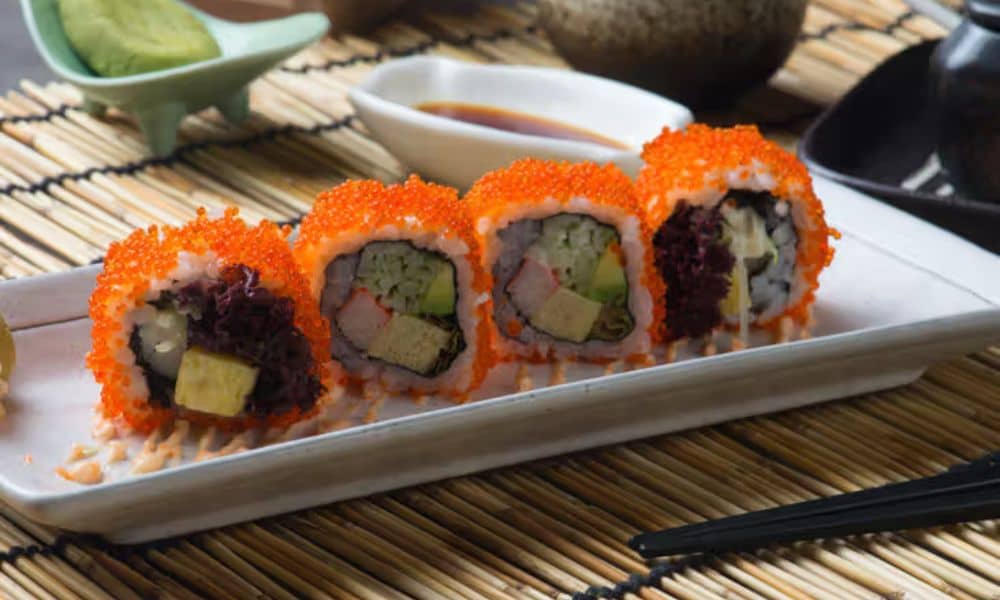If you’re on the perpetual journey to lose weight and improve health, you’ve probably looked into almost every avenue of exercise to dietary supplements, etc. Have you ever thought about trying masago?
This small, tasty fish roe, which are often found on top of sushi, could be that out of the ordinary game changer in your fat loss effort.
What masago is, how it can play a role in supporting fat loss, and the things to be conversational about and aware of. We’ll also provide our recommendations for using masago and will give you some ideas and items for your own menu.
What is Masago?
Masago is the roe (eggs) of the capelin fish, which is a small forage fish that lives in cold water. It’s commonly found in Japanese cuisine in sushi rolls or sauces/spreads, and other culinary arrangements. Masago has a mild flavor that is a hint of saltiness and crunchy, making it a versatile ingredient in many types of dishes.
Masago is an excellent source of protein, omega-3 fatty acids, and other nutrients, including vitamin B12, selenium, and magnesium, which are important for healthy metabolism and other body functions.
Nutritional Benefits That Support Fat Loss
High Protein Count
Protein is necessary for weight loss because it satisfies hunger and preserves lean muscle. Masago has a very high protein count for a small serving, so it’s a good choice for a snack or meal.
Low Calorie Count
Masago is very high in flavor but low in calories. One tablespoon of masago is around 40 calories, so you can add flavor and texture to meals without much calorie count.
High in Omega-3 Fatty Acid
Omega-3’s help regulate metabolism, reduce inflammation, and maintain heart health. Some studies even suggest omega-3’s can help the body burn fat more readily.
Packed When B Vitamins
Vitamin B12 plus a number of B vitamins help food to be converted to energy and keep the nervous system healthy. Higher energy levels can convert into higher levels of activity and higher performance in workouts.
Selenium & Antioxidants
Selenium helps with thyroid function, which you need for metabolism, and antioxidants in masago help fight oxidative stress, which is linked to weight gain and chronic disease.
How Masago Helps in a Fat Loss Diet
One can benefit from including masago in a fat-loss focused diet in a few ways:
Satiation – It is satisfying due to its protein and fat level, and continues to reduce cravings.
Flavor enhancer – It is umami benefitting, reducing the need for high-calorie sauces or other flavour enhancers.
Versatility – It is easy to incorporate into food preparation, salads, omelets, rice bowls and even low carb wraps.
How to Include Masago in Your Diet
Sushi-Inspired Bowls: Stir into brown rice, veggies, and lean protein to create a nutrient-rich meal.
Avocado Toast Upgrade: Add a sprinkle to the top of your avocado toast for a flavor and protein lift.
Omelets and Scrambles: Add to any egg dish to up its nutritious profile with a salty kick.
Dips and Sauces: Blend into Greek yogurt and light mayo to, again, create a low-calorie dip.
Salads: Sprinkle on top of a seaweed salad or roast any greens (mixed greens).
Precautions and Considerations
While masago has many benefits, it’s important to be mindful of a few things:
Sodium Content:
Masago can contain a significant amount of sodium, which may cause water retention and high blood pressure if eaten in large amounts. Just remember – small helping here and there!
Allergies:
If you have a fish allergy, steer clear of this seafood product. Also, there may be additives or colorants to avoid if you have other sensitivities.
Mercury Levels:
Like fish products, there may be a trace amount of mercury. Woman who are pregnant or nursing should discuss it with their doctor.
Quality Matters:
Buy from quality sources to stop and not have it treated with preservatives or a lot of extras!
Tips for Maximizing Benefits
Combine with Whole Foods: Enjoy masago paired with vegetables, whole grains, and lean proteins to make healthier, whole food meals.
Portion Control: Use a small amount (e.g., up to 1-2 tbsp masago) to add flavor while managing sodium and calories from other sources.
Stay Hydrated: If you’re eating salty foods like masago, drink plenty of water to flush excess sodium out of the body.
Read Labels: If you’re purchasing pre-packaged masago, read the labels for additives, sugar, or artificial colors.
Final Thoughts
So Masago may not be the first thing that pops into your head when it comes to a fat loss diet, but based on the nutritional profile, masago is worth it. It is high in protein (and omega-3s), low in calories, and it has a great flavor. Add it to meals to add flavor and help keep you on track when used correctly.
As with any dietary change, moderation matters. For your best fat loss results, use masago as one part of a healthy balanced diet and also add in exercise. Always talk to your doctor if you are new to seafood or have any medical conditions.
With some imagination and caution, masago can be a healthy and great tasting addition to your fat loss journey.
FAQ
Can masago help me to lose weight fast?
While masago can support a fat loss plan through promoting feelings of satiety and also providing nutritional value, it is not going to be a quick fix. The key is consistency with diet and exercise.
How much masago should I eat in a day?
The normal serving size is 1-2 tablespoons. Because masago can be high in sodium content, it is advised to consume it in moderation and keep an eye on recommended sodium limits.
Is Masago safe for everyone?
Not necessarily. If you have a seafood allergy, high blood pressure or are pregnant, it is best to check with a doctor before adding masago into your diet.
Can I eat masago on a low-carb or keto diet?
Yes. It is low in carbs and can fit into low carb, keto, or paleo meal plans.
Does cooking masago reduce the benefits of masago?
Because masago is usually eaten raw or only lightly mixed into other cold foods, cooking has the potential to diminish (slightly) the nutritional profile of masago; therefore, it is best eaten minimally processed here as well.



